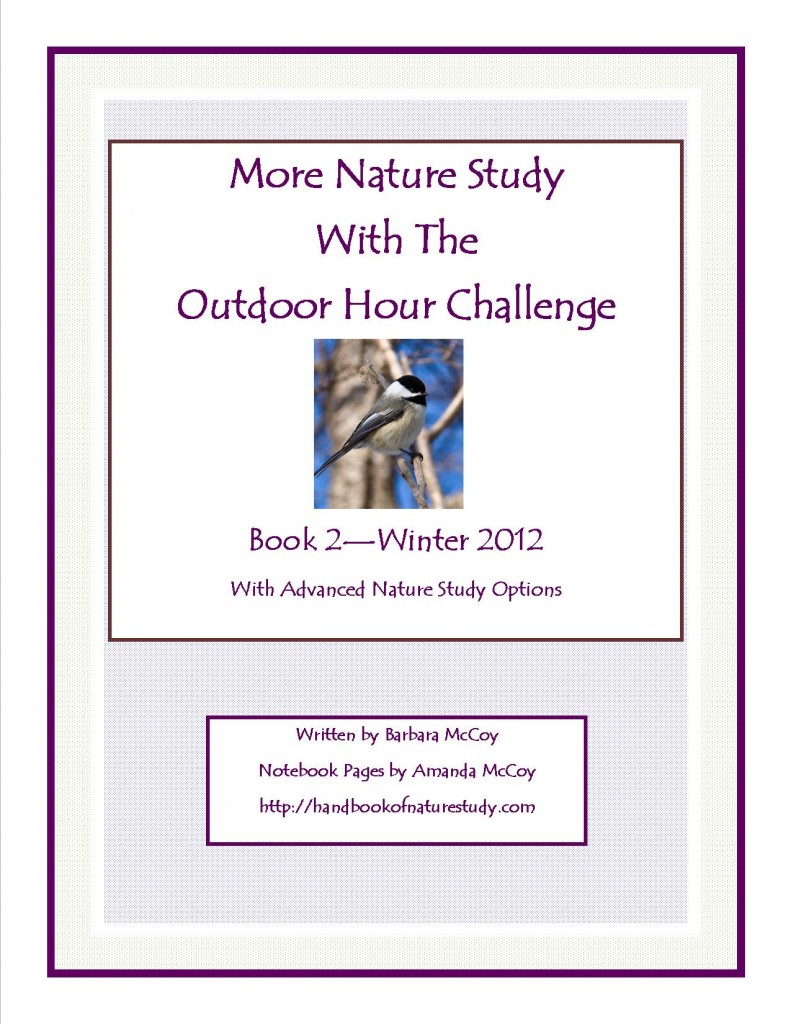Spring Splendor Walk Challenge from More Nature Study Book #3
Friday came and we were planning a snowshoeing day, but recent rains had washed all the snow away. It isn’t much fun to snowshoe in one inch of snow. We regrouped and the boys decided that hiking was definitely their choice for the day so we packed up our lunches, camera, binoculars, and map to head to somewhere new for some springtime exploring.
Mt. Diablo is not the highest or most spectacular mountain in California but it is a landmark that many of us have grown up seeing even from a distance. On a clear day it is visible to many who live in Northern California and most definitely those that live in the San Francisco Bay Area. We were hoping to catch a glimpse of the Golden Gate Bridge and perhaps see all the way back up to Sacramento as well. We were not disappointed.
What a treat to see so many early spring wildflowers as we climbed the winding mountain road up to the summit. We shared the road with bicyclists of all shapes and sizes. We visited the information center and observation spots at the summit before heading out to do our hiking.
We chose to hike the short interpretive trail first that circles the summit. This was a wonderful way to view the different habitats, geology, and plants of this interesting place. Hiking is such a great activity with teenage boys. They enjoyed spotting different landmarks from the trail and with the binoculars they viewed quite a few birds too.
Nature study takes the blinders off and makes you see so much more about the wonder we have right in our own part of the world. We enjoyed seeing the different rocks along the trail…this one especially was interesting. We read in the trail guide that it is called chert which was a new rock to us.
The spring wildflowers were so colorful. Mr. A captured this Western Wallflower along the summit trail on the sunny side of the mountain. Glorious.
The next trail we took was in the Rock City area of the state park. This is a place we are going to enjoy exploring in the future because we didn’t have nearly enough time to do all the hikes and climbs we would have liked to on this one afternoon.
There are caves and rocks to climb on….my boys loved it! What is it with boys and rocks? I am guessing the challenge and the adventure have something to do with the attraction. I was content to see them from the bottom and take some photos.
The boys also climbed Sentinel Rock while I took a rest on a warm sunny corner of the trail. There are steps and a chain rail to assist the climb and the boys spent some time at the top just enjoying the view. While I rested, I was treated to bird song and soft breezes.
We took one last hike out the Fossil Ridge Trail. We didn’t have a good enough idea of where we were going and what to expect when we got there so we ended up hiking to the top of the ridge and then turning around. Next time we will be better prepared and actually see the fossils.
We did observe some beautiful wildflowers and a spectacular view of the San Francisco Bay Area from the trail which made it worth the effort. The flower above is Baby Blue Eyes.
So ends our hiking trip this first week of Spring 2012. What a great way to get ourselves going with the new series of Outdoor Hour Challenges. I feel like making things new and fresh for teens is worth the effort and I want to keep it going in our family. This is the time of their life when they can find interests that will extend into their adult years.
So back to our part of the world… about a three hour drive across the Sacramento River Delta, across the San Joaquin Valley, and up into the Sierra Foothills.
You can still join the More Nature Study Book #3 challenges. We just got started with the very first one this week: Spring Splendor Walk. You can take your walk in your very own backyard if you would like or perhaps at a near-by park. I encourage everyone to get outside this week for just a few minutes with your children to start this season of nature study with some fun outdoor time.
I am linking up to a new to me monthly meme at The Homeschool Scientist. Click over and join in.











































